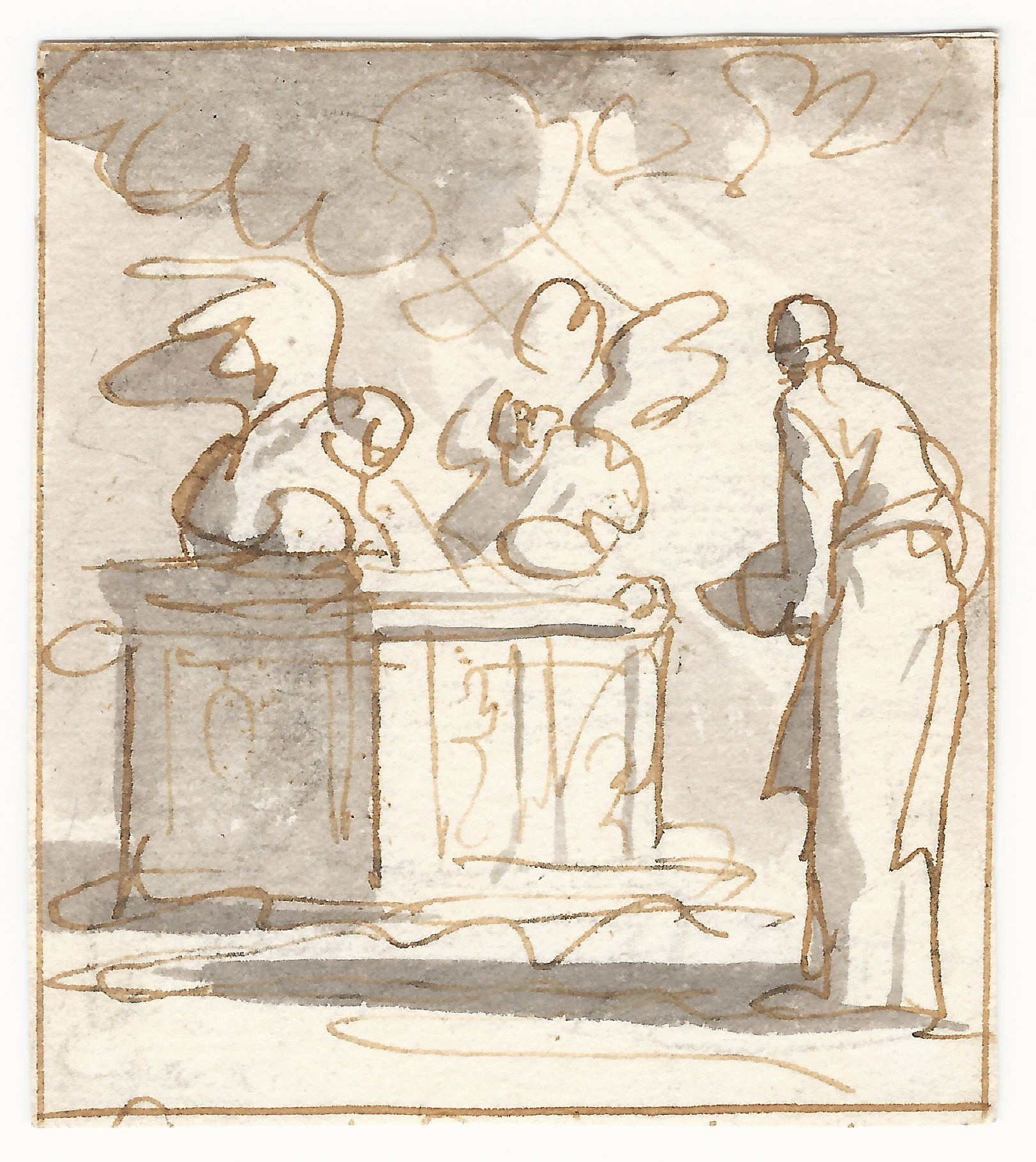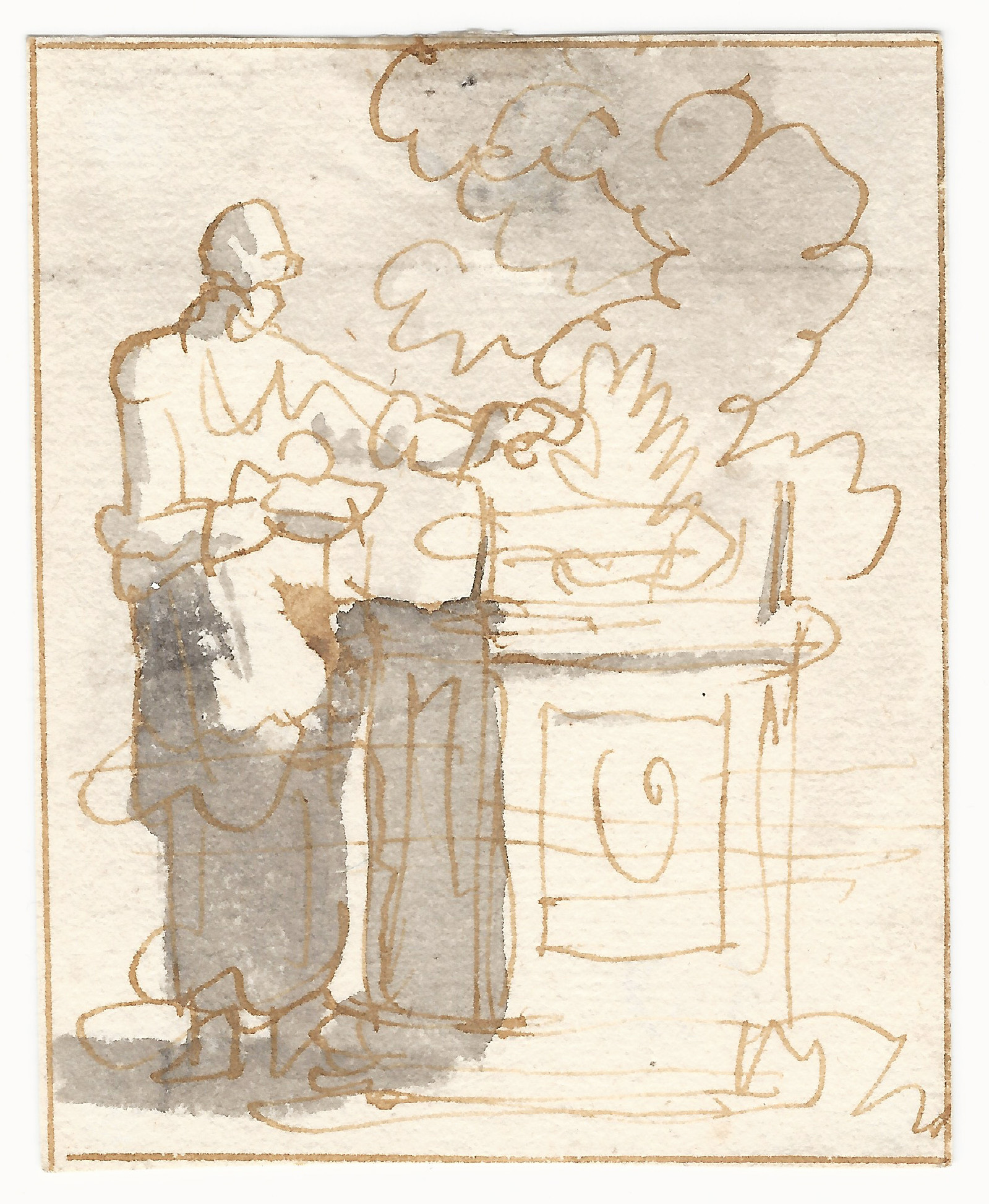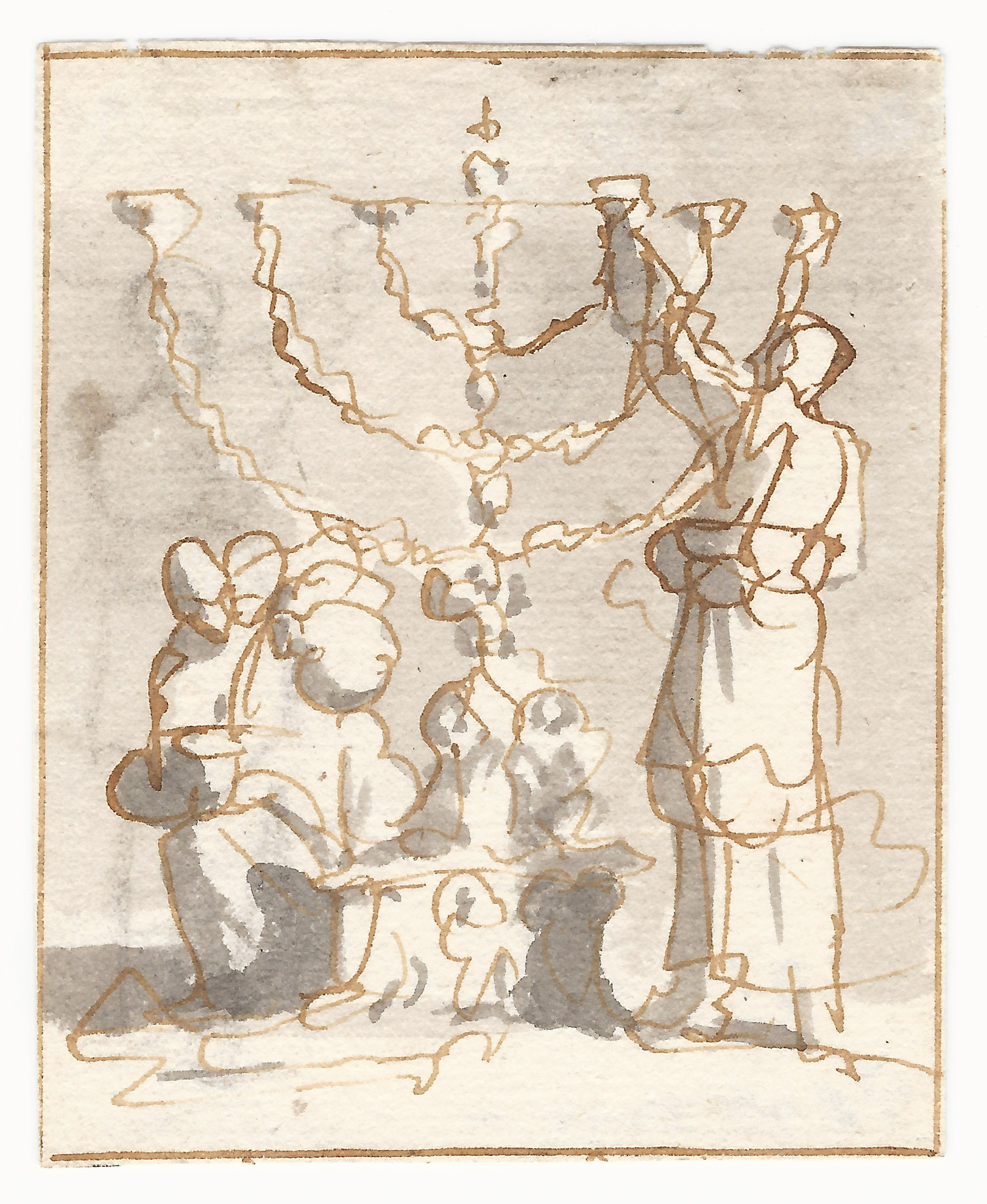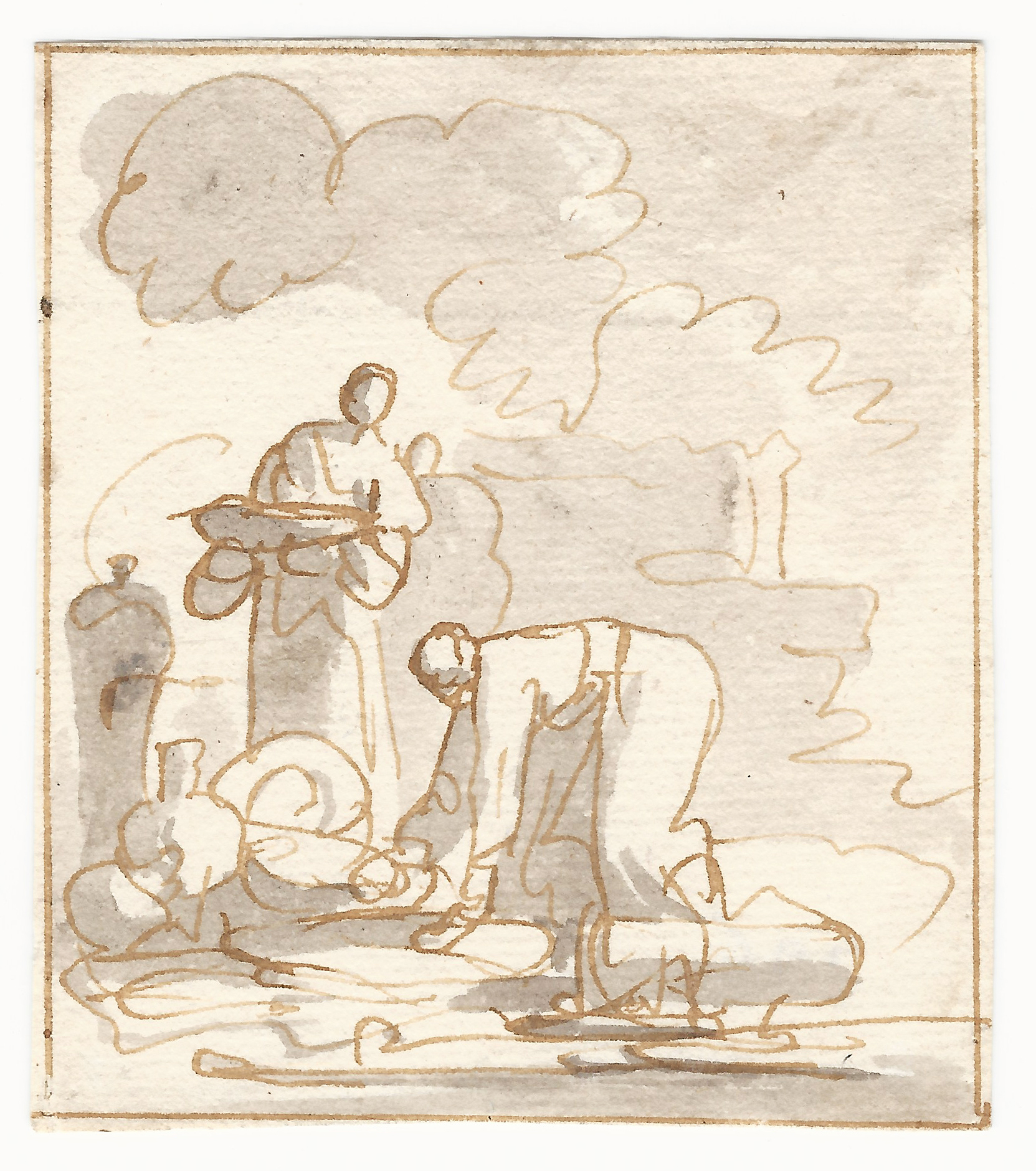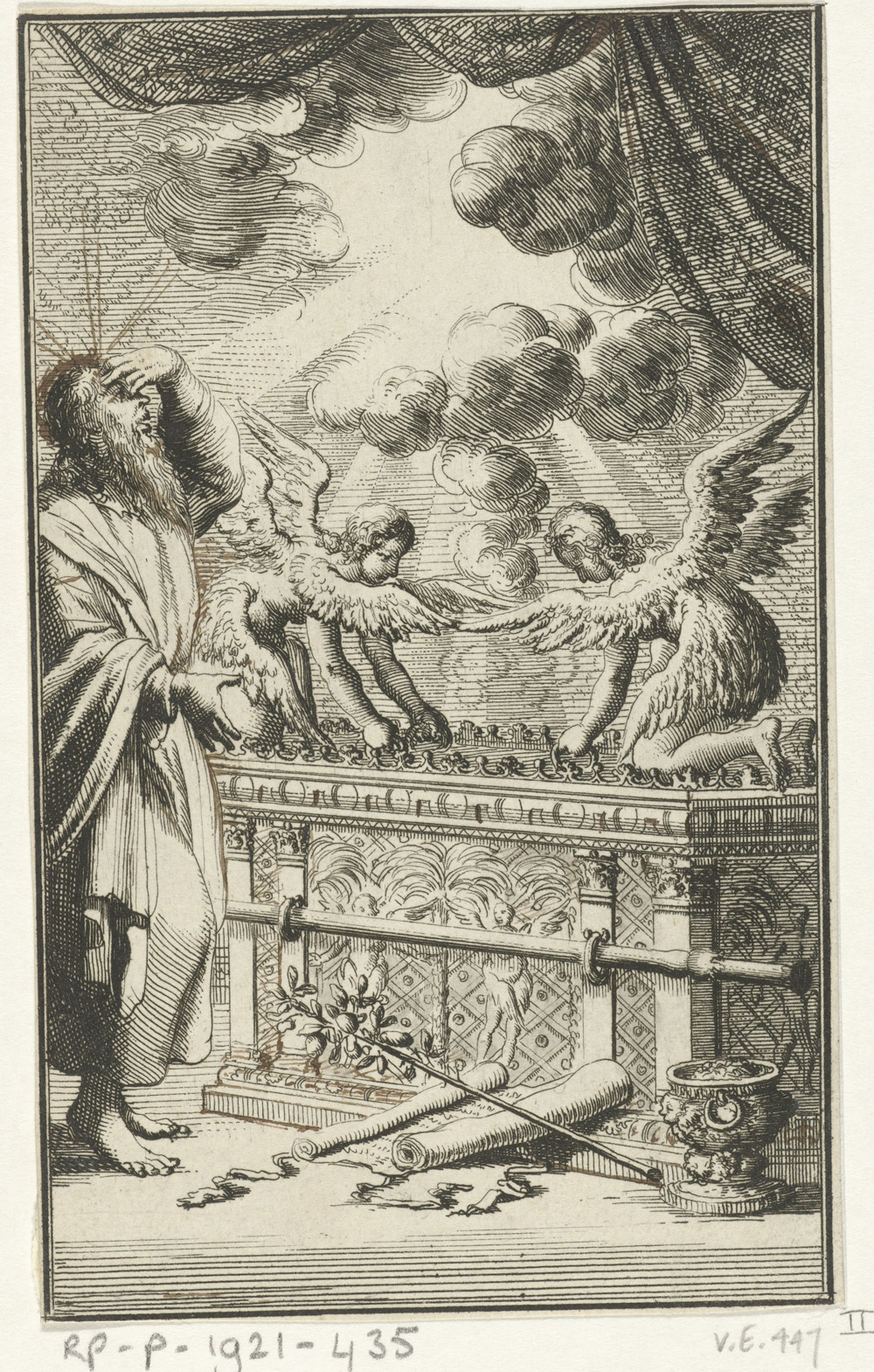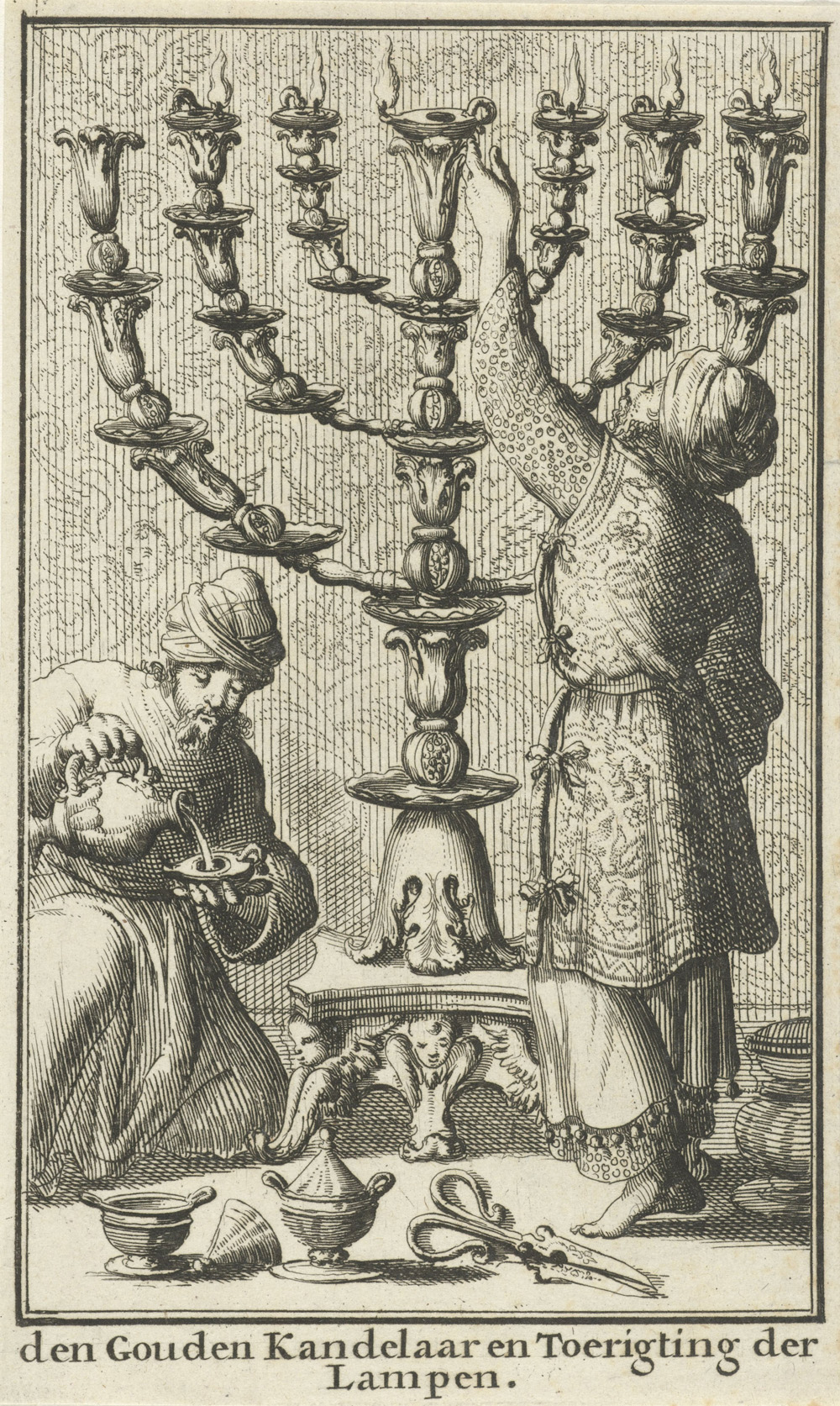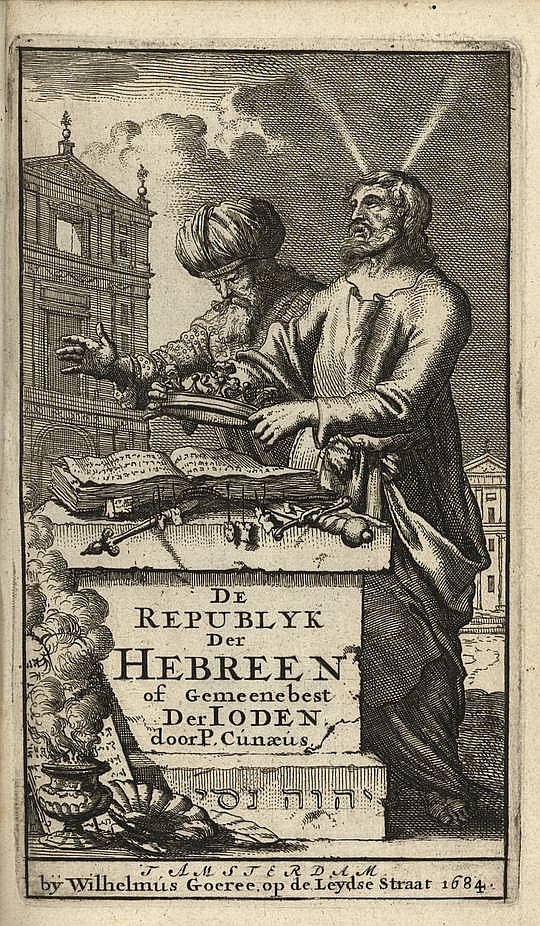JAN LUYKEN (Amsterdam 1649 – 1712 Amsterdam)
Jan Luyken (Amsterdam 1649 – 1712 Amsterdam)
Four Scenes from Jewish History: The Ark of the Covenant; The Gold Candelabra or Menorah; The Golden Altar or the Altar of Incense; The Last Day of Sukkot
Each pen and brown ink, grey wash, remains of black chalk, brown ink framing lines, each approximately 75 x 65 mm (3 x 2.6 inch)
Provenance
Private collection, The Netherlands
***
Jan Luyken was born in Amsterdam as the son of Caspar Luyken (b.1608), who taught him the art of copper engraving.1 Jan was active as an engraver, draughtsman and poet, and produced many engravings and etchings used as book illustrations; together with Romeyn de Hooghe his is considered the most famous and prolific book illustrator of the Golden Age. At the outset of his career, Luyken published several profane works, but during his twenties he experienced a religious epiphany, which inspired him to embrace the Baptist faith of his youth and produce moralistic writings and collections of Emblemata. Luyken married in Amsterdam, and among his children was Caspar Luyken (1672–1708), who was taught by his father as a printmaker. He spent most of his life in Amsterdam, apart from a few years living in Haarlem and in the neighbourhood of Hoorn. Luyken is best known for his book Het Menselyk Bedryf, “The Book of Trades”, published in Amsterdam in 1694, illustrating a wide range of professions and occupations, a rich source of information on many early professions, and by virtue of these prints is one of the best-known Dutch seventeenth-century artists.
Jan Luyken must have been a very active draughtsman, as several thousands of prints by him are known, but not very many drawings by Luyken survive today. Most drawings by his hand are preparatory designs for prints, often executed in a rather quick and spontaneous manner: this may be due to the fact that Luyken was both designer and engraver, and he worked from his own designs, which therefore did not need to have the same degree of finish as when engravers worked after designs by other artists.
These four interesting scenes were drawn by Luyken as preparatory studies for etchings in a history of the Jews, published in Amsterdam in 1683: De republyk der Hebreen, of gemeenebest der joden, written by Petrus Cunaeus (fig.). Luyken has loosely sketched the Ark of the Covenant,2 the Golden Altar of Incense,3 and the Menorah,4 which were all three turned into etchings for the publication (in reverse). The fourth design, identified as the Last Day of Sukkot by Irene Faber,5 to whom I am grateful, does not appear to have been included in the book. The designs are particularly interesting as they show Luyken making many creative decisions when they were actually engraved, with arms in different positions and small compositional changes, showing the creative mind at work. As is well known, Amsterdam had a thriving Jewish community, which provided inspiration to many artists working in this city during the seventeenth century, most notably Rembrandt, who frequently portrayed Jewish sitters in his etchings and paintings.
SOLD TO THE JEWISH HISTORICAL MUSEUM (JOODS HISTORISCH MUSEUM), AMSTERDAM
1. For the artist, see: P. van Eeghen, Het werk van Jan en Casper Luyken, Amsterdam 1905, passim and I.H. van Eeghen en R.C. lambour, ‘Jan en Casper Luyken: emblemata (Facher, fan, waaier) I’, Jaarboek Amstelodamum 84 (1992), pp. 61-106.
2. Petrus Cunaeus, De republyk der Hebreen, of gemeenebest der joden, Amsterdam (Wilhelmus Goeree) 1683, vol. II, p. 150: etching, sheet size 131 x 81 mm; a copy preserved in the Rijksprentenkabinet, inv. no. RP-P-1921-435; Van Eeghen 1905, no. 447.
3. Cunaeus, vol. II, p. 284: etching, sheet size 131 x 81 mm; Rijksprentenkabinet, inv. no. RP-P-1921-437; Van Eeghen, no. 448.
4. Cunaeus, vol. II, p. 302: etching, sheet size 142 x 86 mm; a copy preserved in the Rijksprentenkabinet, inv. no. RP-P-1896-A-19368-319; Van Eeghen 1905, no. 449.
5. Email correspondence, 13 December 2018.
